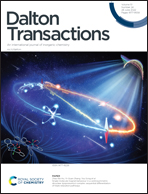Triphenylamine substituted copper and zinc phthalocyanines as alternative hole-transporting materials for solution-processed perovskite solar cells†
Abstract
In the present study, new peripheral substituted Zn(II) and Cu(II) phthalocyanine derivatives (p-ZnPc and p-CuPc) bearing bulky aromatic triphenylamine groups were synthesized as alternative hole-transporting materials (HTMs). The structures of the new phthalocyanine derivatives (p-ZnPc and p-CuPc) were illuminated by various spectroscopic techniques such as mass spectrometry and 1H, and 13C-NMR. After structural analysis, their photophysical properties in solution and the solid phase were examined by UV-Vis absorption and fluorescence spectroscopy. Using p-ZnPc and p-CuPc as HTMs, highly stable perovskite-based solar cells with the structure of FTO/SnO2/perovskite/p-ZnPc and p-CuPc/Ag have been developed and characterized. It was observed that our devices with p-ZnPc as the HTM maintain over 93% of the initial performance for more than 960 h under atmospheric conditions (22–27 °C) with 35–45% relative humidity. In addition, some strategies such as using various methylammonium iodide (MAI) and lead iodide (PbI2) blend ratios between 1 : 0.4 and 1 : 1.8 were employed to test the effect of the blend ratios on the long term stability of the perovskite-based solar cells. Our findings demonstrated that the spin-coated p-ZnPc based HTM demonstrated competitive power conversion efficiency and exhibited superior stability without encapsulation compared to commonly used HTMs.



 Please wait while we load your content...
Please wait while we load your content...